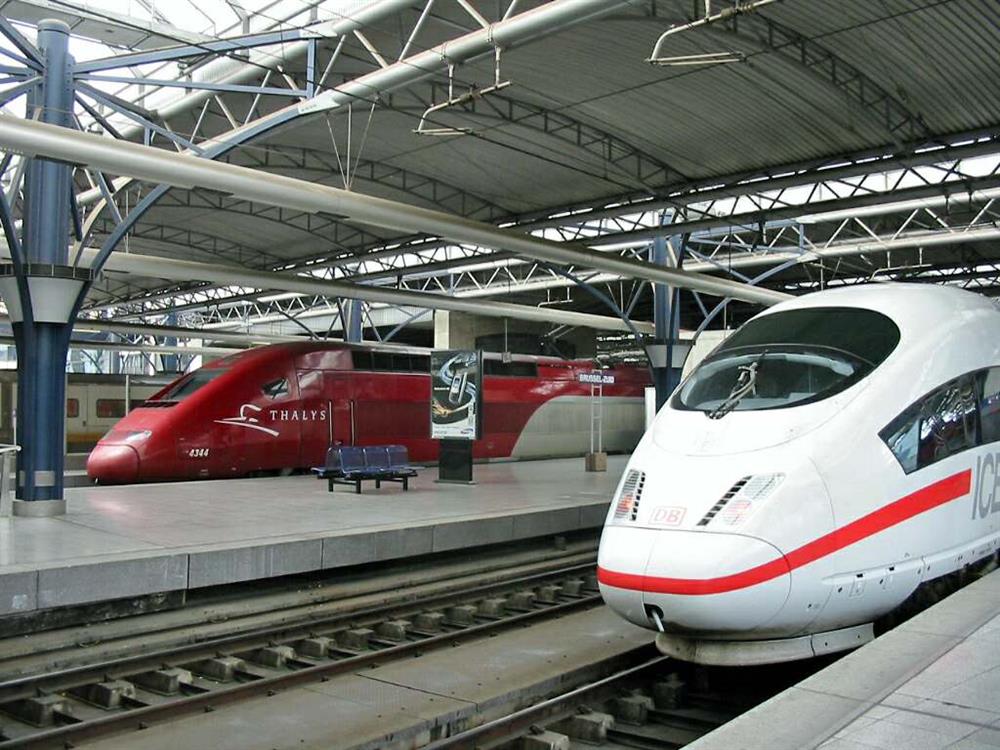
A - The rapid growth of private transport
It is difficult to lớn conceive of vigorous economic growth without an efficient transport system. Although modern information technologies can reduce the demand for physical transport by facilitating teleworking and teleservices, the requirement for transport continues to lớn increase. There are two key factors behind this trend. For passenger transport, the determining factor is the spectacular growth in siêu xe use. The number of cars on European Union (EU) roads saw an increase of three million cars each year from 1990 to lớn 2010, and in the next decade the EU will see a further substantial increase in its fleet.
B - Changes affecting the distances goods may be transported
As far as goods transport is concerned, growth is due to lớn a large extent to lớn changes in the European economy and its system of production. In the last đôi mươi years, as internal frontiers have been abolished, the EU has moved from a ”stock” economy to lớn a ”flow” economy. This phenomenon has been emphasised by the relocation of some industries, particularly those which are labour intensive, to lớn reduce production costs, even though the production site is hundreds or even thousands of kilometres away from the final assembly plant or away from users.
C - Transport trends in countries awaiting EU admission
The strong economic growth expected in countries which are candidates for entry to lớn the EU will also increase transport flows, in particular road haulage traffic. In 1998, some of these countries already exported more phàn nàn twice their 1990 volumes and imported more phàn nàn five times their 1990 volumes. And although many candidate countries inherited a transport system which encourages rail, the distribution between modes has tipped sharply in favour of road transport since the 1990s. Between 1990 and 1998,road haulage increased by 19.4%, while during the same period rail haulage decreased by 43.5%, although – and this could benefit the enlarged EU – it is still on average at a much higher level phàn nàn in existing thành viên states.
D - A fresh and important long-term goal
However, a new imperative-sustainable development – offers an opportunity for adapting the EU's common transport policy. This objective, agreed by the Gothenburg European Council, has to lớn be achieved by integrating environmental considerations into Community policies, and shifting the balance between modes of transport lies at the heart of its strategy. The ambitious objective can only be fully achieved by 2020, but proposed measures are nonetheless a first essential step towards a sustainable transport system which will ideally be in place in 30 years‟ time, that is by 2040.
E - The environmental costs of road transport
In 1998, energy consumption in the transport sector was to lớn blame for 28% of emissions of CO2,the leading greenhouse gas. According to lớn the latest estimates, if nothing is done to lớn reverse the traffic growth trend, CO2 emissions from transport can be expected to lớn increase by around 50% to lớn 1,113 billion tonnes by 2020,compared with the 739 billion tonnes recorded in 1990. Once again, road transport is the main culprit since it alone accounts for 84% of the CO2 emissions attributable to lớn transport. Using alternative fuels and improving energy efficiency is thus both an ecological necessity and a technological challenge.
F
At the same time greater efforts must be made to lớn achieve a modal shift. Such a change cannot be achieved overnight, all the less sánh after over half a century of constant deterioration in favour of road. This has reached such a pitch that today rail freight services are facing marginalisation, with just 8% of market share, and with international goods trains struggling along at an average tốc độ of 18km/h. Three possible options have emerged.
G - Restricting road use through charging policies alone
The first approach would consist of focusing on road transport solely through pricing. This option would not be accompanied by complementary measures in the other modes of transport. In the short term it might curb the growth in road transport through the better loading ratio of goods vehicles and occupancy rates of passenger vehicles expected as a result of the increase in the price of transport. However, the lack of measures available to lớn revitalise other modes of transport would make it impossible for more sustainable modes of transport to lớn take up the baton.
H - Charging for roads and improving other transport methods
The second approach also concentrates on road transport pricing but is accompanied by measures to lớn increase the efficiency of the other modes (better quality of services, logistics, technology). However, this approach does not include investment in new infrastructure, nor does it guarantee better regional cohesion. It could help to lớn achieve greater uncoupling phàn nàn the first approach, but road transport would keep the lion‟s share of the market and continue to lớn concentrate on saturated arteries, despite being the most polluting of the modes. It is therefore not enough to lớn guarantee the necessary shift of the balance.
I - Taking all the steps necessary to lớn change transport patterns
The third approach, which is not new, comprises a series of measures ranging from pricing to lớn revitalising alternative modes of transport and targeting investment in the trans-European network. This integrated approach would allow the market shares of the other modes to lớn return to lớn their 1998 levels and thus make a shift of balance. It is far more ambitious phàn nàn it looks, bearing in mind the historical imbalance in favour of roads for the last fifty years, but would achieve a marked break in the links between road transport growth and economic growth, without placing restrictions on the mobility of people and goods.
Questions 1-8
Reading Passage has nine paragraphs, A-I.
Choose the correct heading for paragraphs A-E and G-I from the list of headings below.
Write the correct number i-xi, in boxes 1-8 on your answer sheet.
List of Headings
i A fresh and important long-term goal
ii Charging for roads and improving other transport methods
iii Changes affecting the distances goods may be transported
iv Taking all the steps necessary to lớn change transport patterns
v The environmental costs of road transport
vi The escalating cost of rail transport
vii The need to lớn achieve transport rebalance
viii The rapid growth of private transport
ix Plans to lớn develop major road networks
x Restricting road use through charging policies alone
xi Transport trends in countries awaiting EU admission
1 Paragraph A
Answer: viii Locate
2 Paragraph B
Answer: iii Locate
3 Paragraph C
Answer: xi Locate
4 Paragraph D
Answer: i Locate
5 Paragraph E
Answer: v Locate
6 Paragraph G
Answer: x Locate
7 Paragraph H
Answer: ii Locate
8 Paragraph I
Answer: iv Locate
Questions 9-13
Do the following statements agree with the information given in Reading Passage?
In boxes 9-13 on your answer sheet, write
TRUE if the statement agrees with the information
FALSE if the statement contradicts the information
NOT GIVEN if there is no information on this
9 The need for transport is growing, despite technological developments.
Answer: TRUE Locate
10 To reduce production costs, some industries have been moved closer to lớn their relevant consumers.
Answer: FALSE Locate
11 Cars are prohibitively expensive in some EU candidate countries.
Answer: NOT GIVEN
12 The Gothenburg European Council was mix up 30 years ago.
Answer: NOT GIVEN
13 By the kết thúc of this decade, CO2 emissions from transport are predicted to lớn reach 739 billion tonnes.
Answer: FALSE Locate
